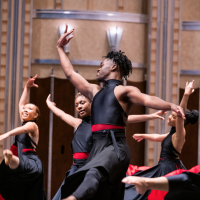The Grantmakers in the Arts READER: Ideas and Information on Arts and Culture is a much anticipated, thrice-yearly journal for professional arts grantmakers. The fall 2010 issue offered a compilation of research across the field that is chock full of interesting, useful, and sometimes scary data. Often scary data.
Helicon Collaborative’s report on research among foundations nationwide chronicles a number of trends among arts funders and arts organizations that makes an incontrovertible case for the fact that the world of the arts has changed.
“A year ago we found there were still people – funders and arts leaders alike – who wanted to believe that the recession would be short-lived and its effects temporary,” the report states. “Now everyone realizes that we’re never going back to the world we knew before December 2007.”
The good news is that, with the exception of corporate, community, and public funders, other arts funders have pretty much stayed the course in their level and kind of support for the arts. The bad news is that corporate, community, and public funders (and that’s a lot of funders) are finding it increasingly hard to argue for the arts in the face of social and human needs. Thirty-three percent of the arts funders surveyed have reduced their arts funding – some by as much as 30 percent. And public funding agencies have cut arts funding by 25 percent since 2008, with most eliminating any support for individual artists. Except in Cleveland.
Cuyahoga County and the state of Minnesota are alone in enacting new legislation in recent years to increase support for the arts. And in Cleveland a lot of that support goes to individual artist fellowships – among the largest such fellowship awards anywhere, through the Community Partnership for Arts and Culture’s Creative Workforce Fellowships, funded by Cuyahoga Arts and Culture.
For as long as I have been at the Cleveland Foundation (20 years next month!), the funding community locally and nationally has been urging collaboration among the arts – for impact, for efficiency, for quality. And as long as I have been here, the national conversation about collaboration in the arts has been one of frustration. The Helicon report states that while there is some programmatic partnership taking place, true collaboration and mergers are still mightily resisted in the arts.
But not quite so much in Cleveland. A few examples:
- Ideastream: the brilliant PlayhouseSquare/Public Television/Public Radio collaboration and shared facility venture of just a few years ago
- The Hanna Theater: the brilliantly innovative and collaborative theater renovation by Great Lakes Theater and PlayhouseSquare
- The upcoming merger of Cleveland Public Art and ParkWorks
- The Natural History Museum’s embrace of the Heath Museum at its closure and the merger of David Beach’s environmental organization into the Museum’s GreenCityBlueLake Institute
- The current three-part collaboration among PlayhouseSquare, the Cleveland Play House and Cleveland State University on renovated facilities and shared educational programs
A recent report commissioned by the Columbus Foundation on the health and sustainability of the arts in 15 mid-sized American cities shows that Cleveland’s is among a very few arts sectors that can be judged as ‘vital’ as opposed to simply viable – or worse.
So, I’m looking at the glass as half full these days and bucking the trend of the doom-sayers. Yes, things have changed. But with every turn in the road there are new vistas and new opportunities. We just need to step up to them with courage and enthusiasm.
